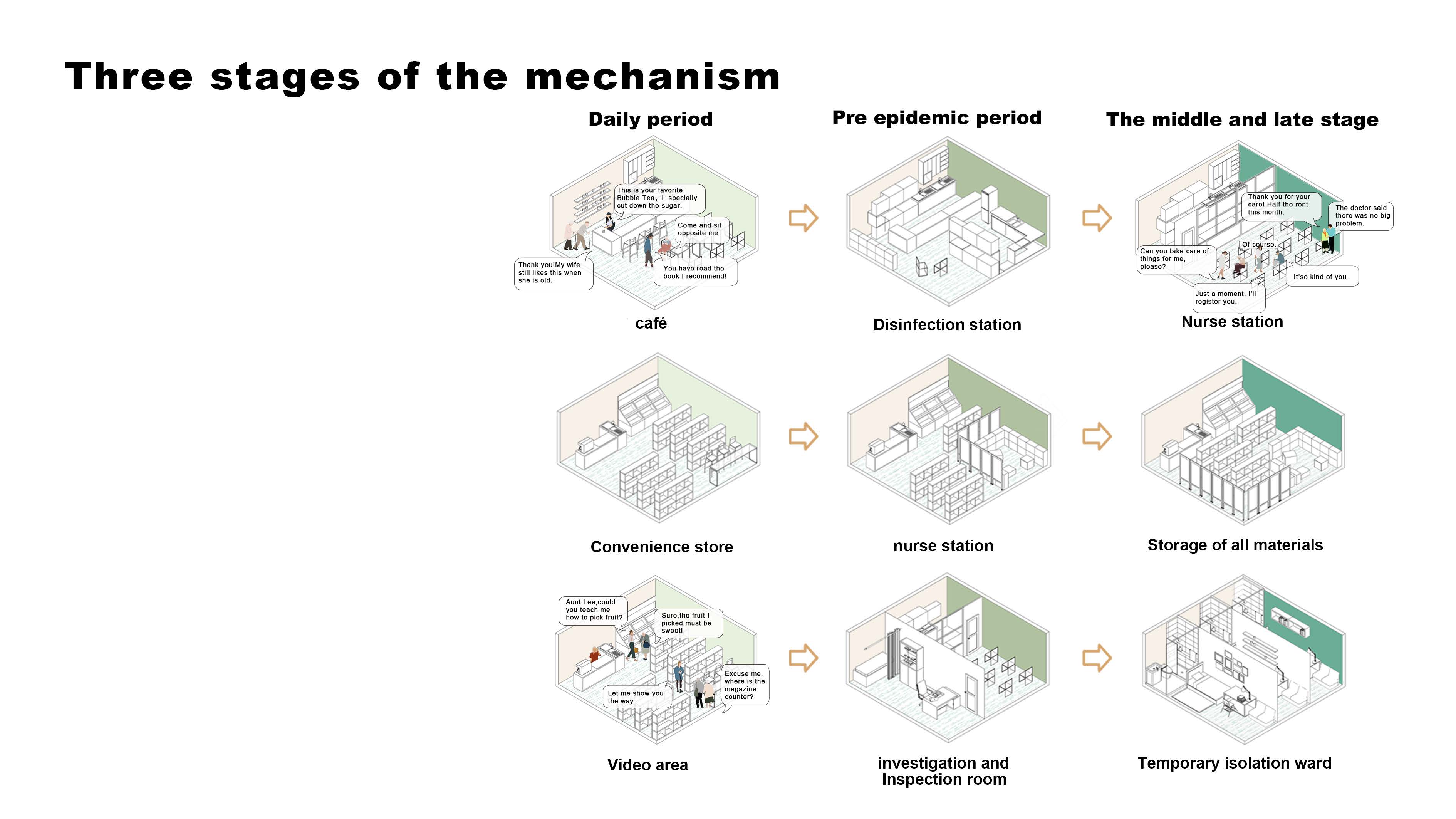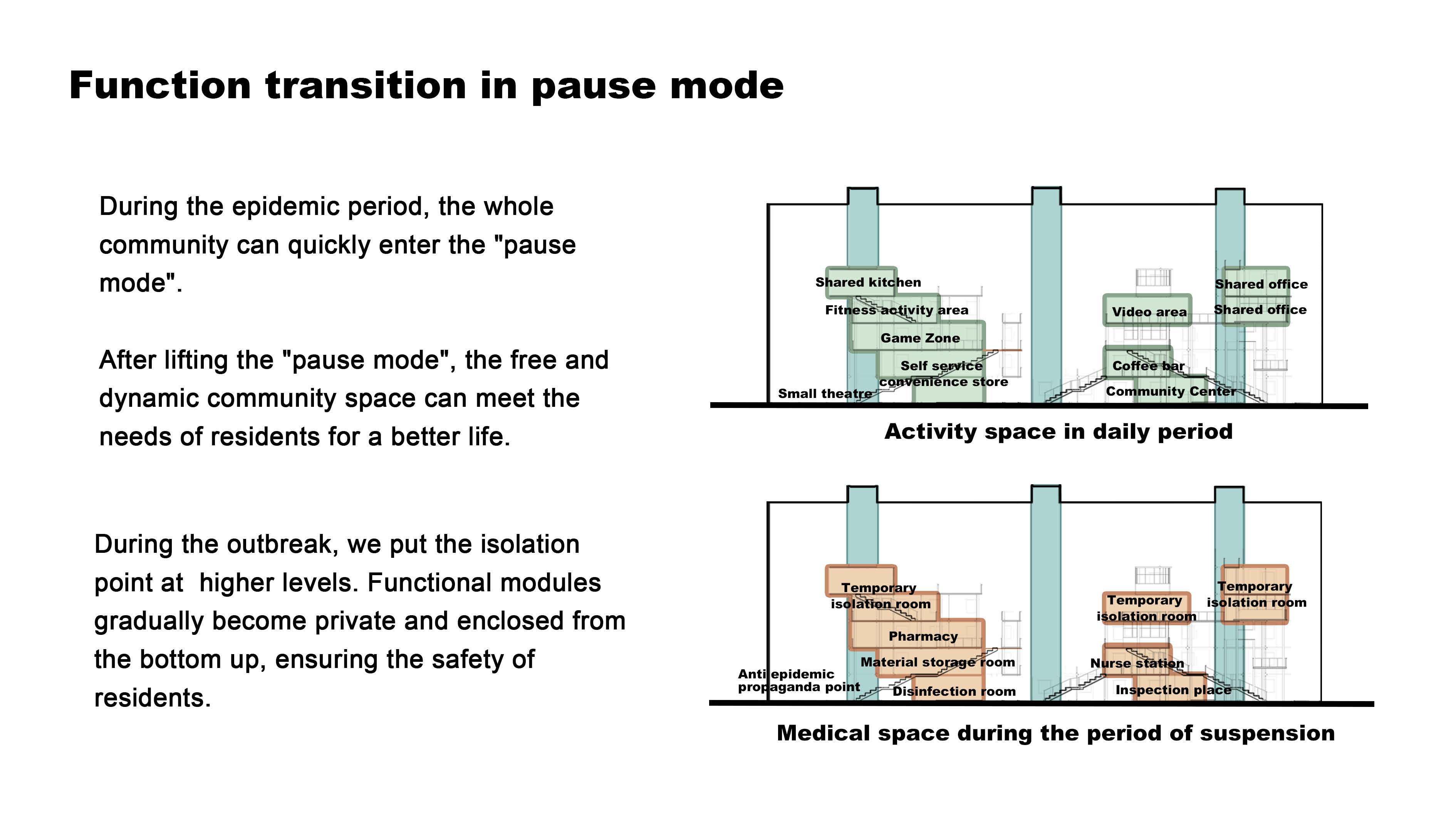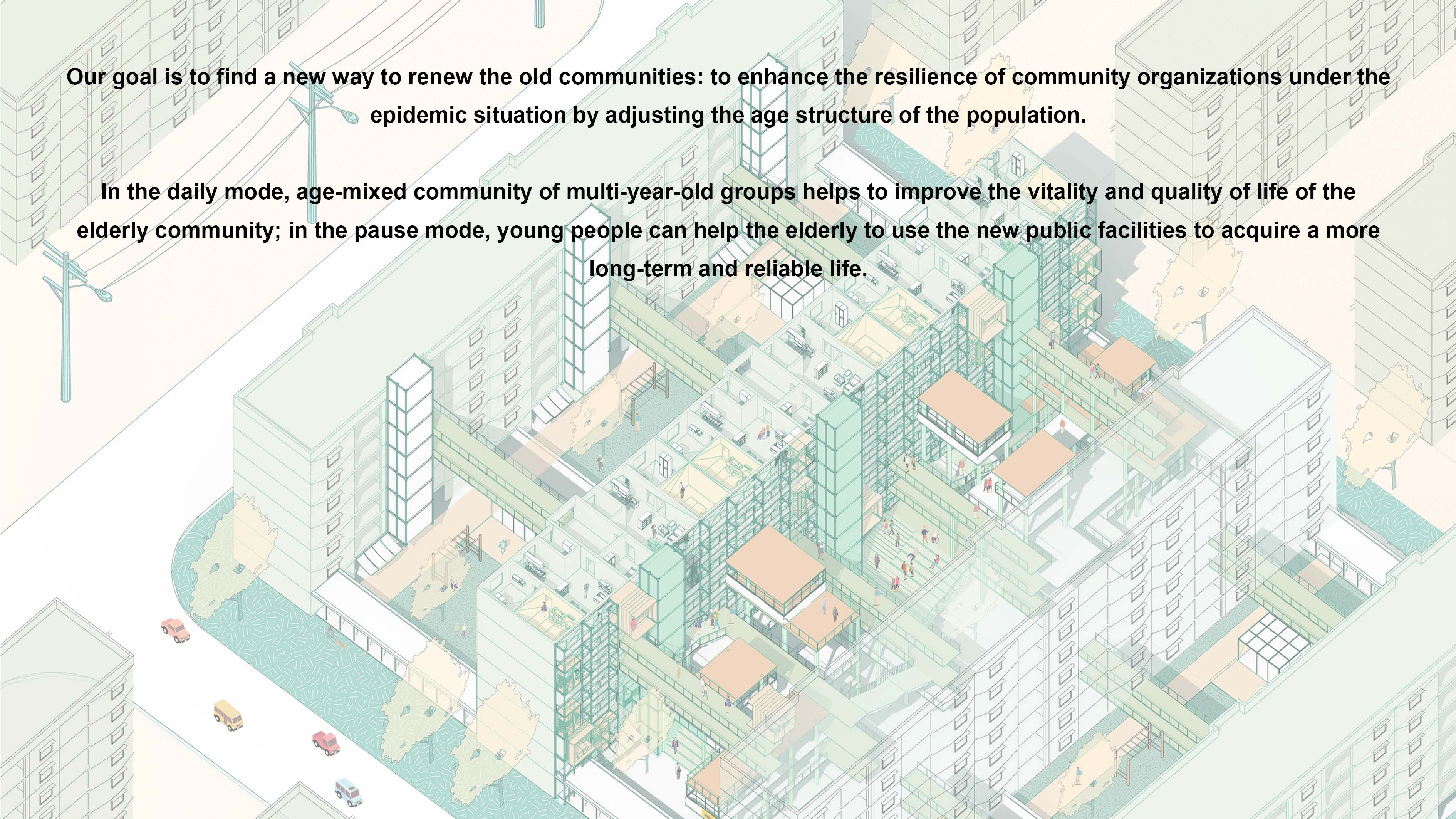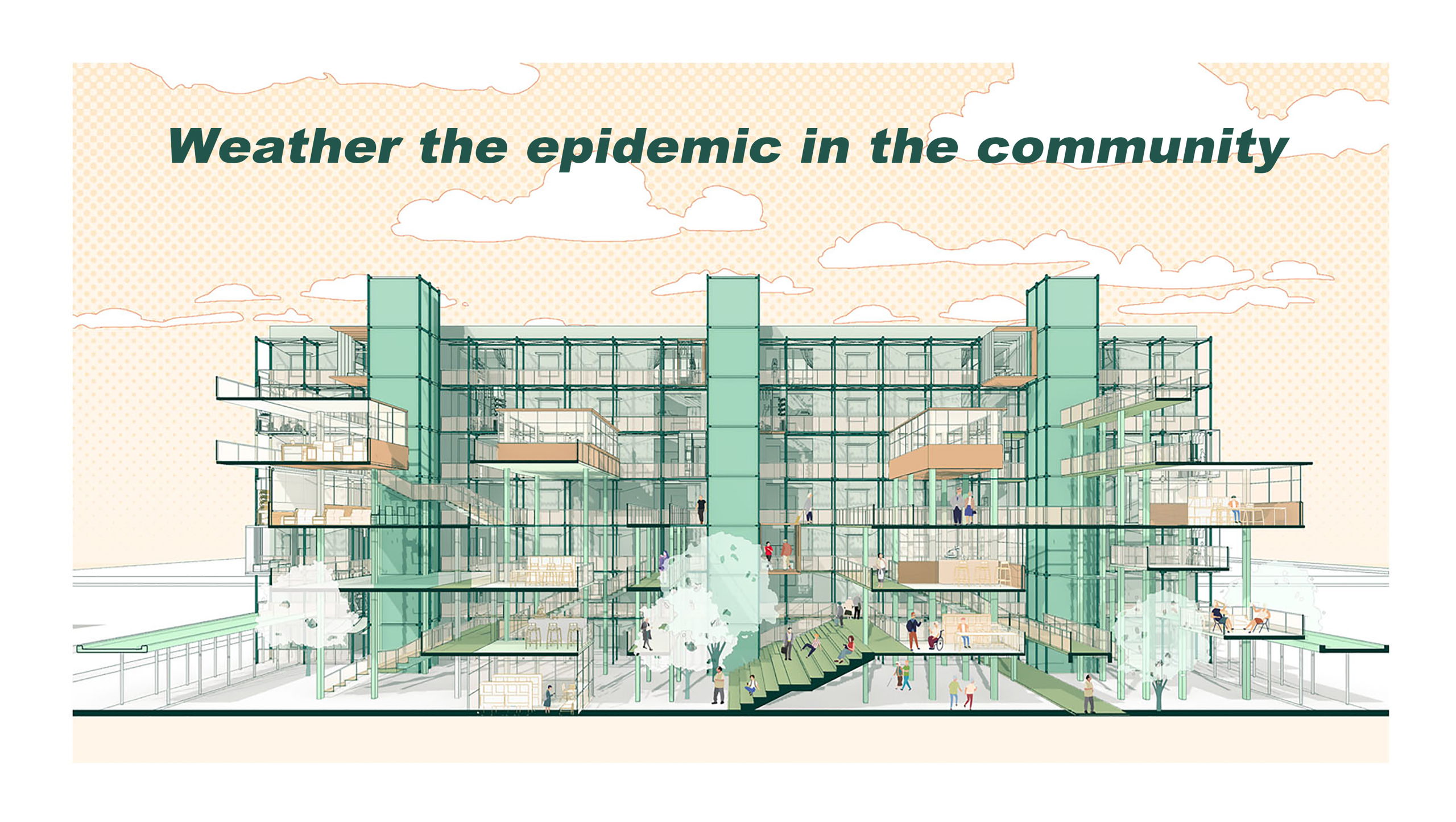
In the future, the epidemic situation in high-density cities around the world may become more frequent, causing more serious crises in all aspects, so it is vital for our cities to build more resilience to fight against the epidemic. Complete supporting infrastructure can provide the resilience of the community to deal with the outbreak. However, though infrastructure facilities are complete in some places, casualties are also very heavy in the face of the epidemic. This is because “resilience” not only comes from architectural space,but also depends on Population structure. In fact,the people in the community are the real source of community vitality. our design goal is not just to create a resilient physical environment,but centering on injecting new impetus into the community.
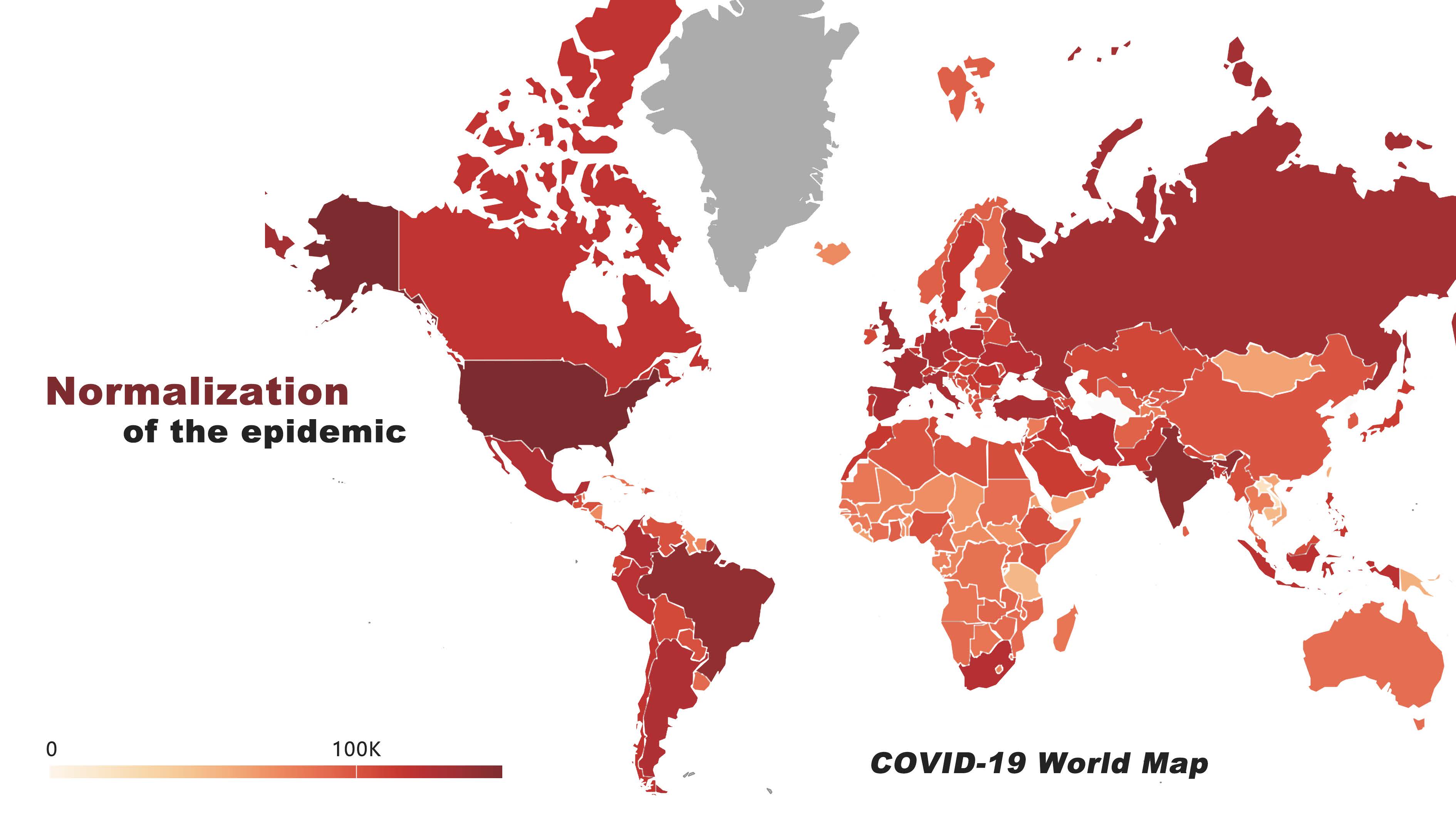
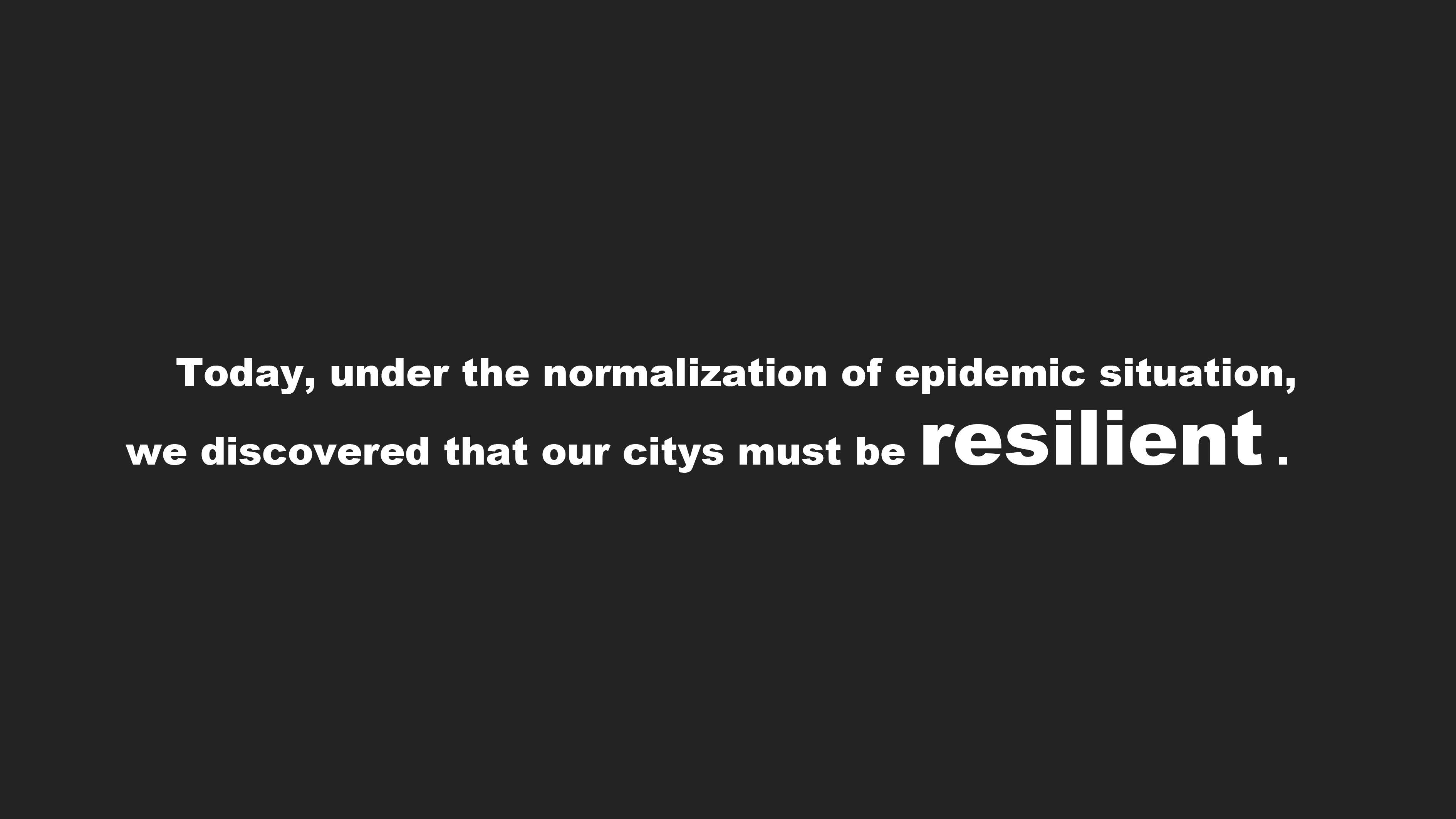
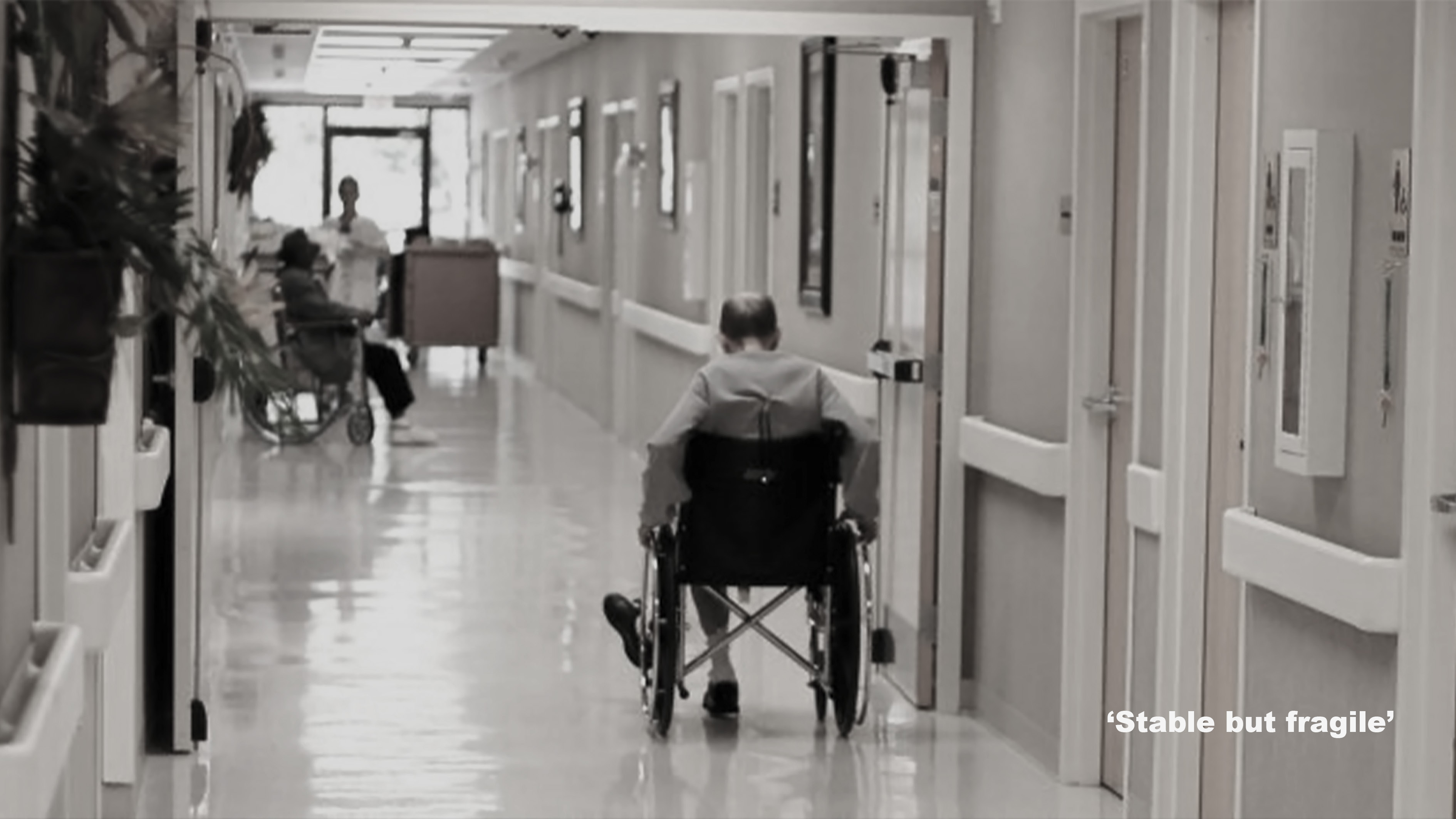
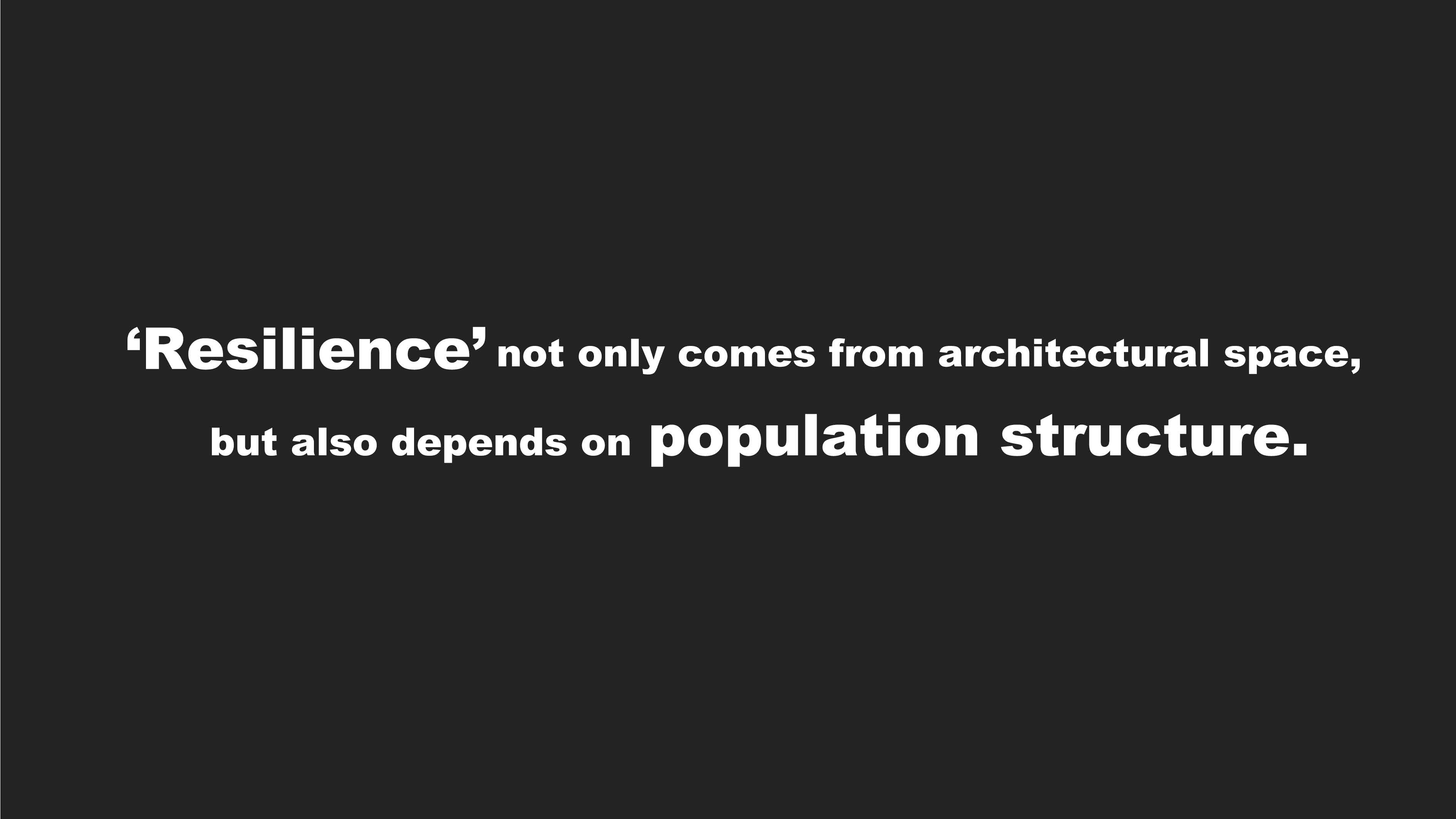
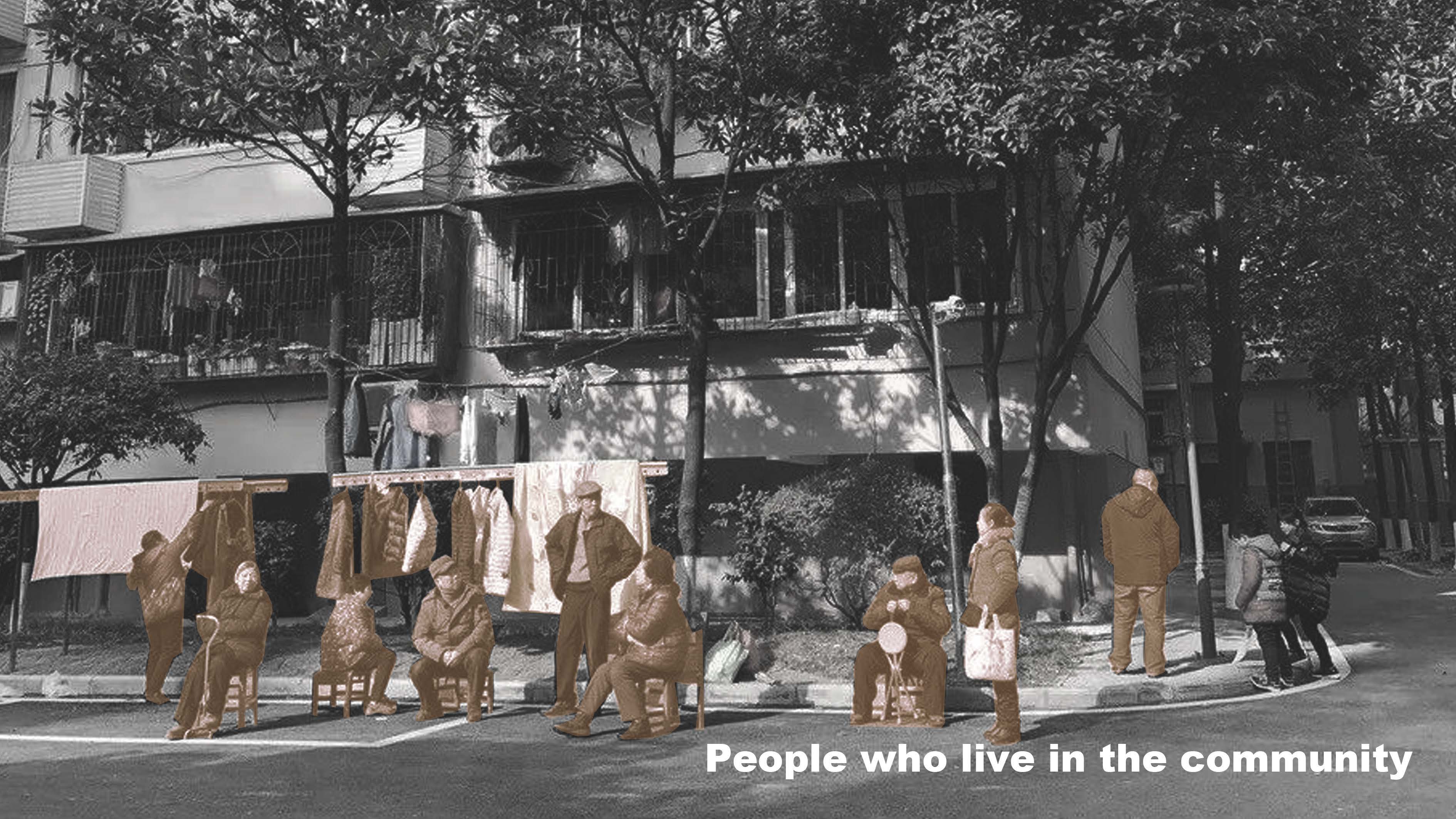
Nowadays, the development of urbanization has gradually sliding into the saturation stage. In the future,there will be more high-density cities. Population density will provide more "Petri dishes" for viruses to break species boundaries and mutate rapidly. At the same time,the gravity of the aging problem is getting increasingly staggering around the globe 。While the elderly are vulnerable to COVID-19 due to their weakened immune system and therefore suffer heavy casualties in the face of the epidemic.
There are a lot of multi-storey residential communities in the old urban areas of big cities, which are similar to those in the picture. The lack of public facilities, closed management difficulties and weak community organizations make it difficult to respond to and achieve effective management and prevention under the normalized epidemic situation. What is more worrying is that there are a large number of elderly groups living in these old communities. They are either restricted by objective economic conditions or unwilling to leave the existing neighborhood and geographical relationship.
If the epidemic breaks out, insufficient public facilities, weak community organizations and high risk of the elderly will bring great challenges to the epidemic prevention work in the old community. So we pay attention to building the resilience of the old community.
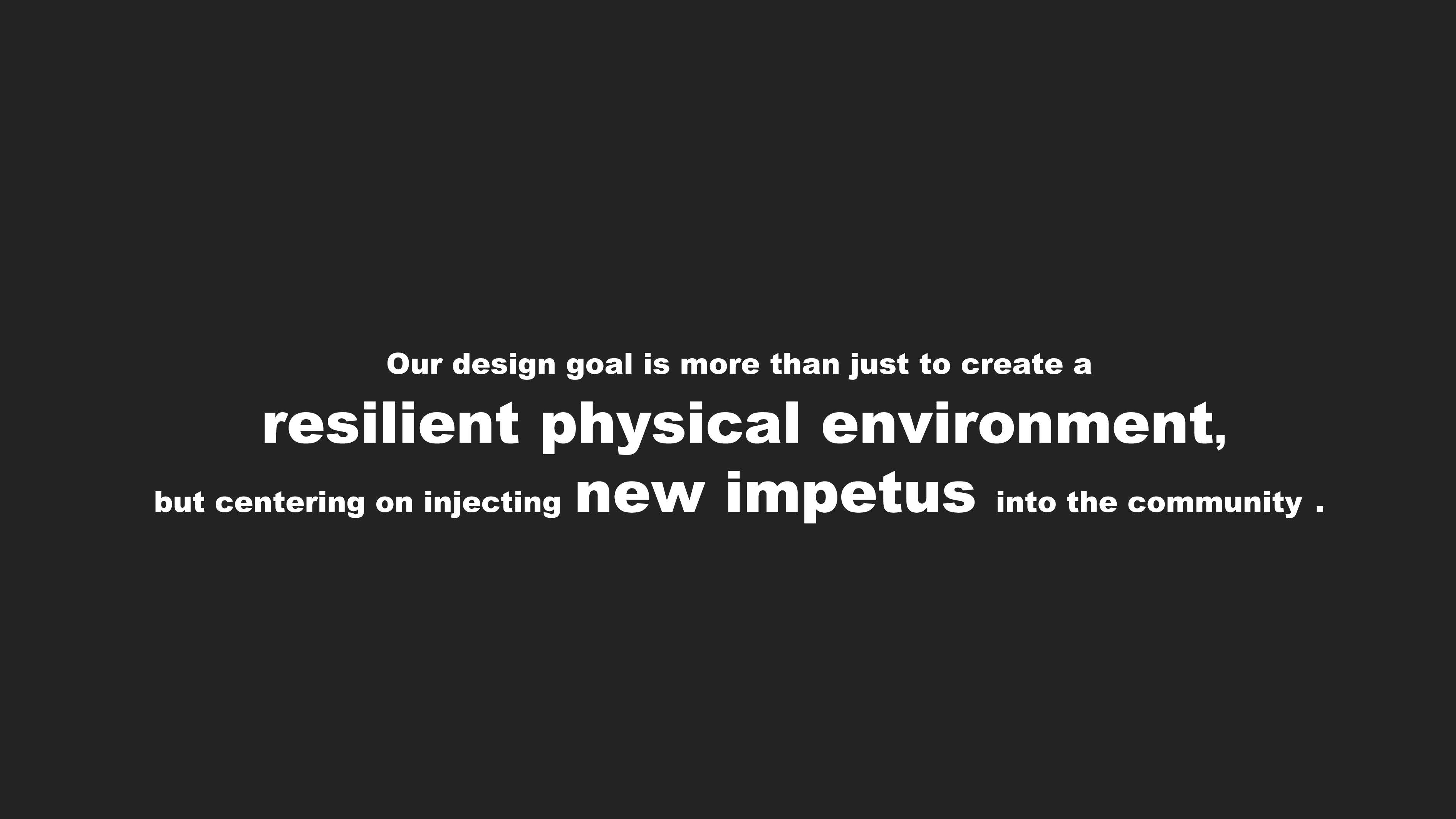
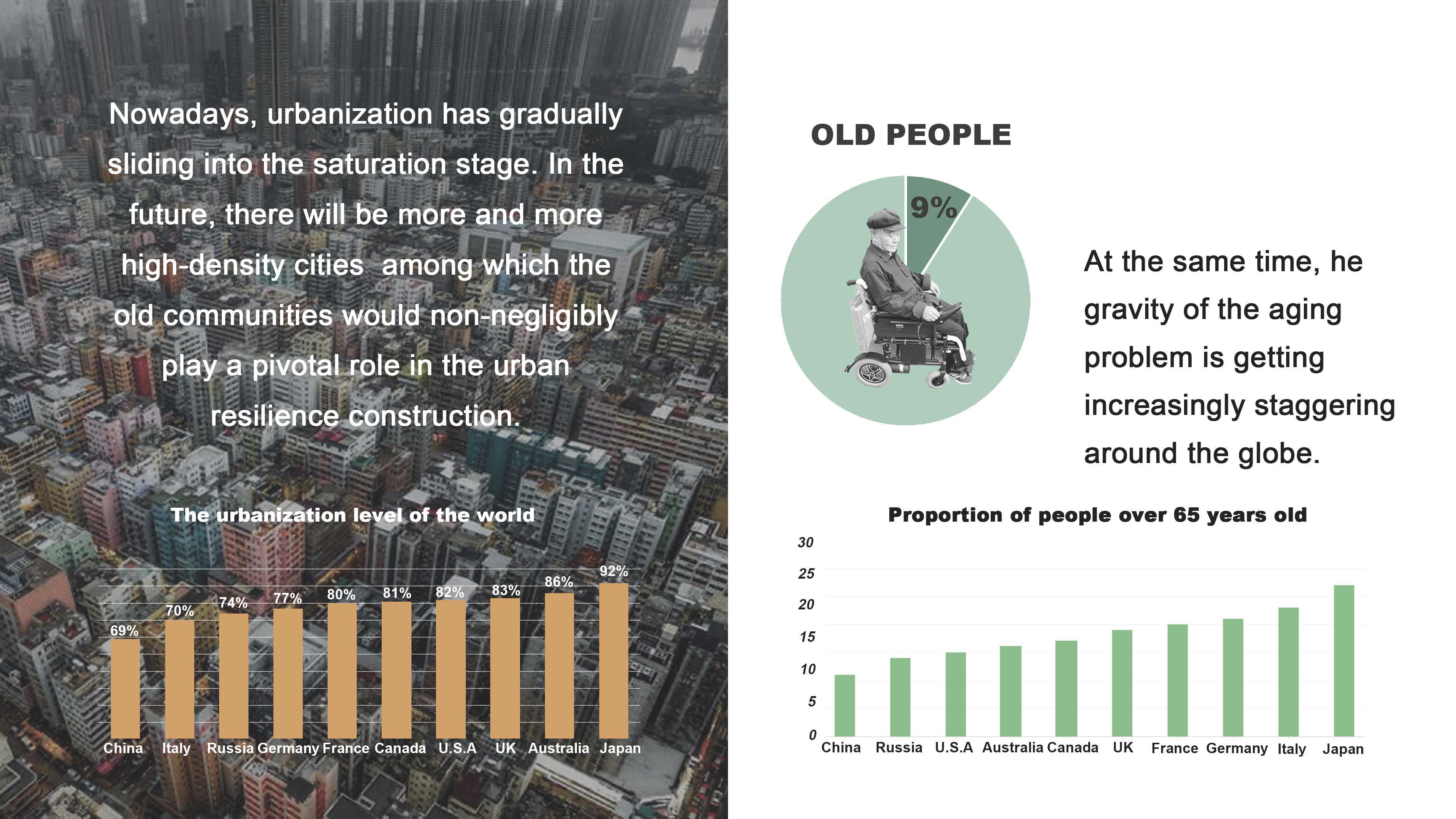
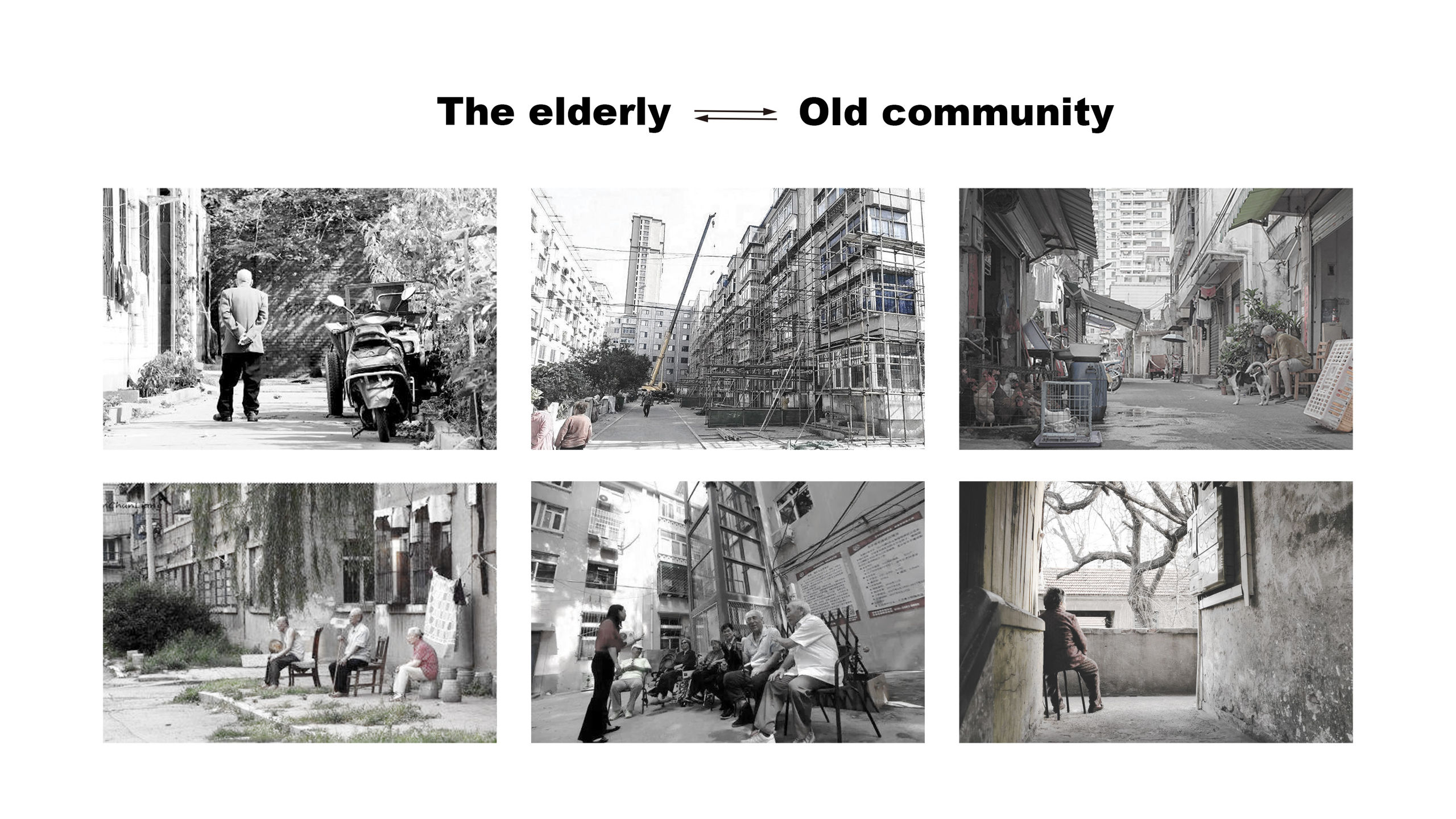
So, How to build an old community with resilient population structure? We think that we need to solve two key problems, The first is how to attract young people to live in old communities. The second is how to make young befriend the elderly. Let's solve the first problem.
Due to the change of traditional family model, a lot of young people go out to work and live alone. As they have just started to work, most of them can't rent a house with suitable commuting distance and price, so they can only choose to live far away, increasing the impact to public health incidence after the epidemic outbreak. The old community is located near the urban area, with a convenient commuting, low rent, and developed public transportation, so it is an ideal place for them to live.
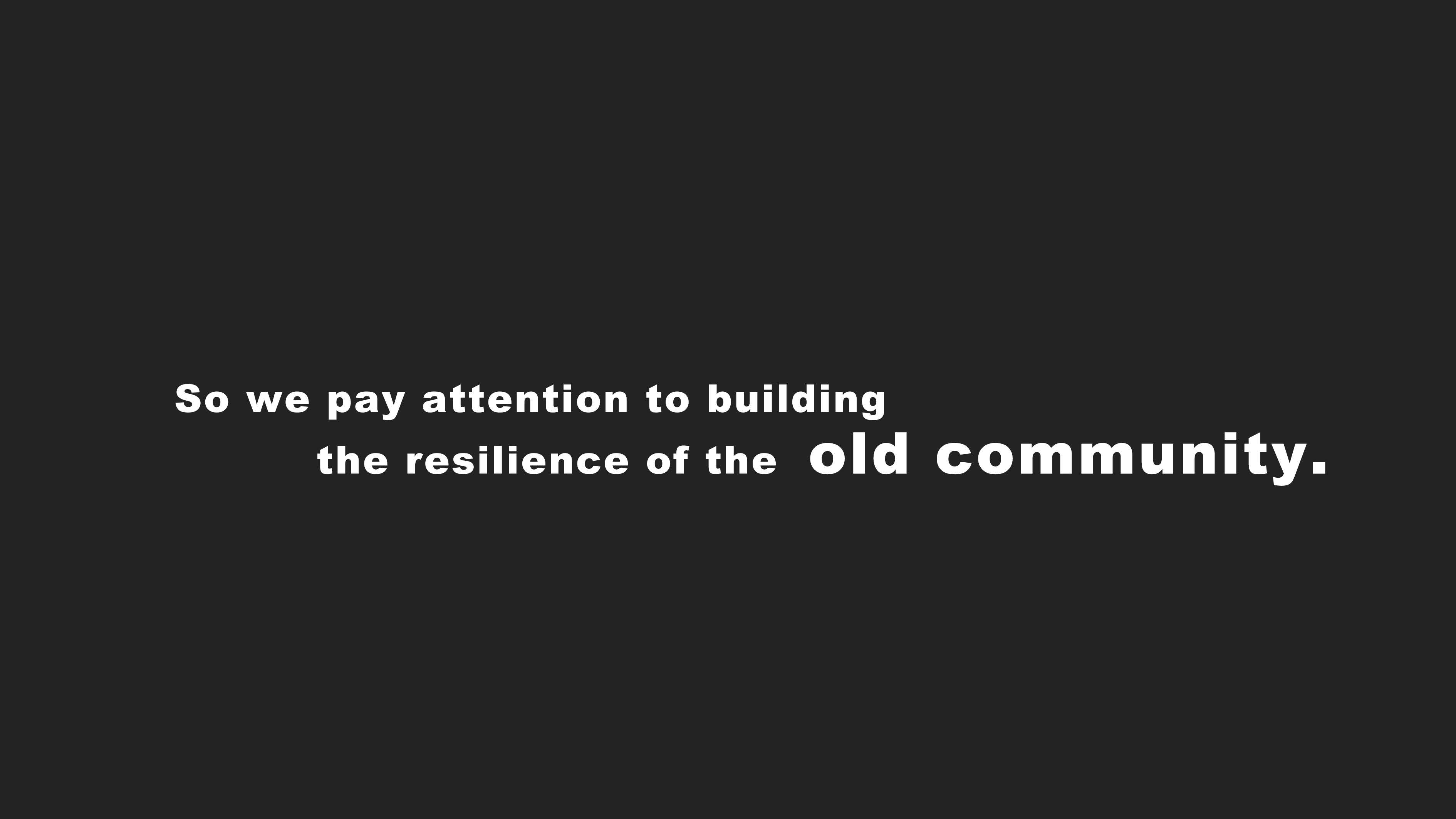
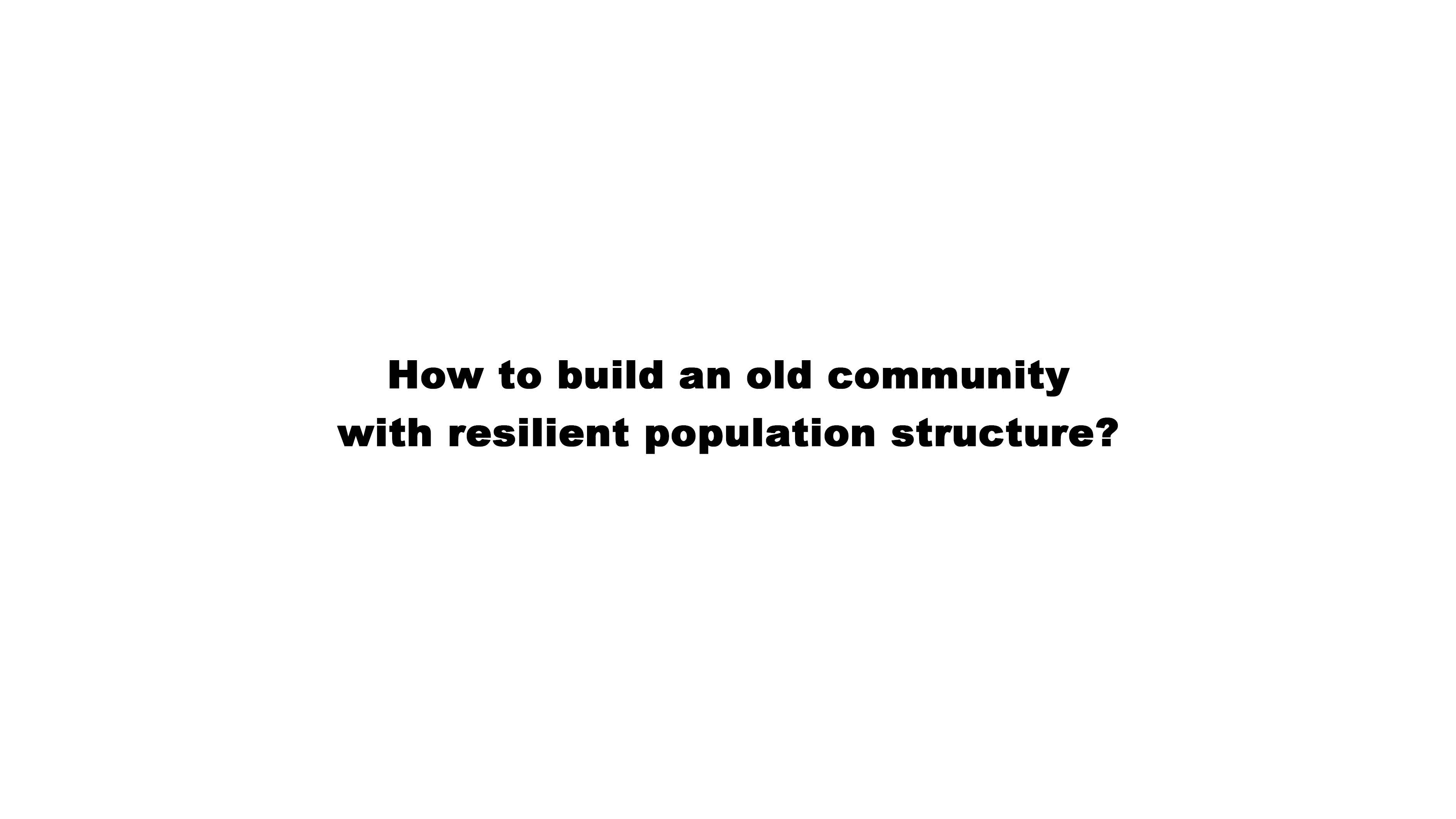
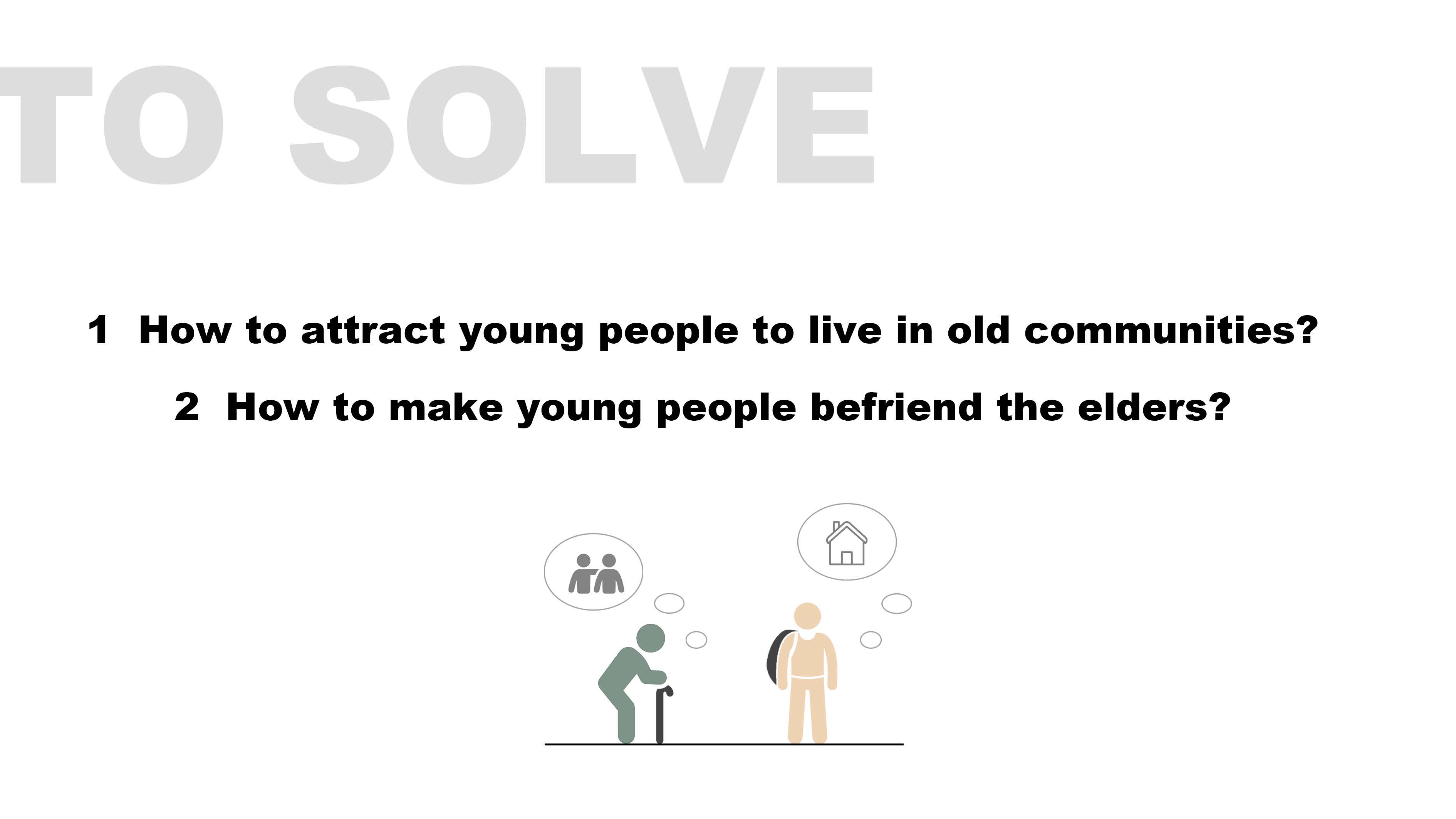
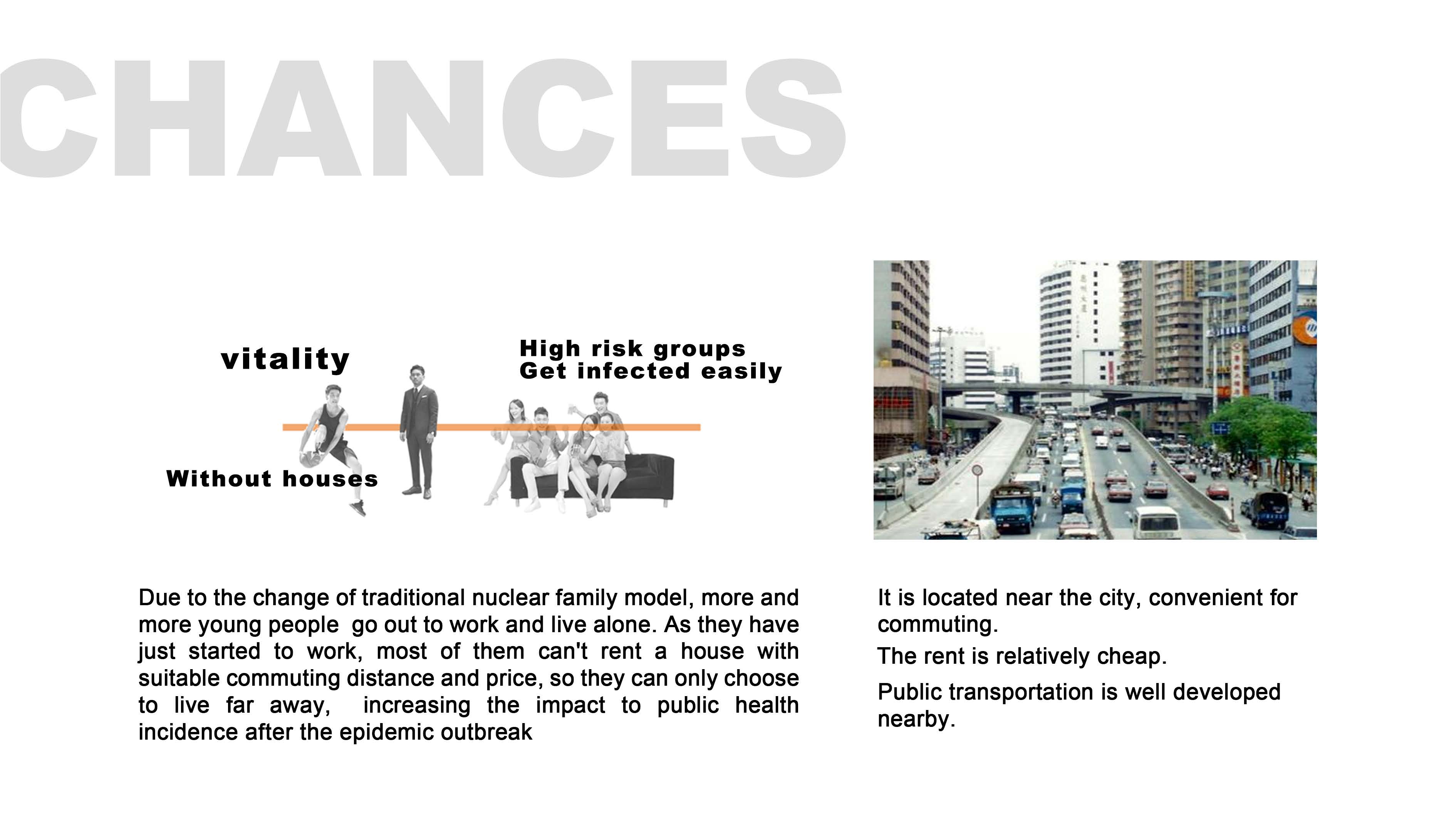
At the same time, we analyze the house types of the old communities, and find that the space utilization rate is very low, and only 4% of the elderly's daily time is spent in guest rooms. Therefore, we plan to transform them and rent them to young people. the elderly rent the idle space to the young people to solve the high rent problem for the young people, in return the young people help the elderly to make use of the new public facilities to get a more long-term and reliable life and provide the vitality of the community.
We creatively realized the separation of flown line in the design. First of all, we make use of the added walkway to make the elderly and young people not interfere with each other Then we add a small bathroom space on one side of the empty room to create an independent single room. Finally, we add elevators to make it more convenient for residents to go upstairs and downstairs.
Independent room can attract young people working nearby to rent. In this way, young people can have a comfortable living space in the old community.
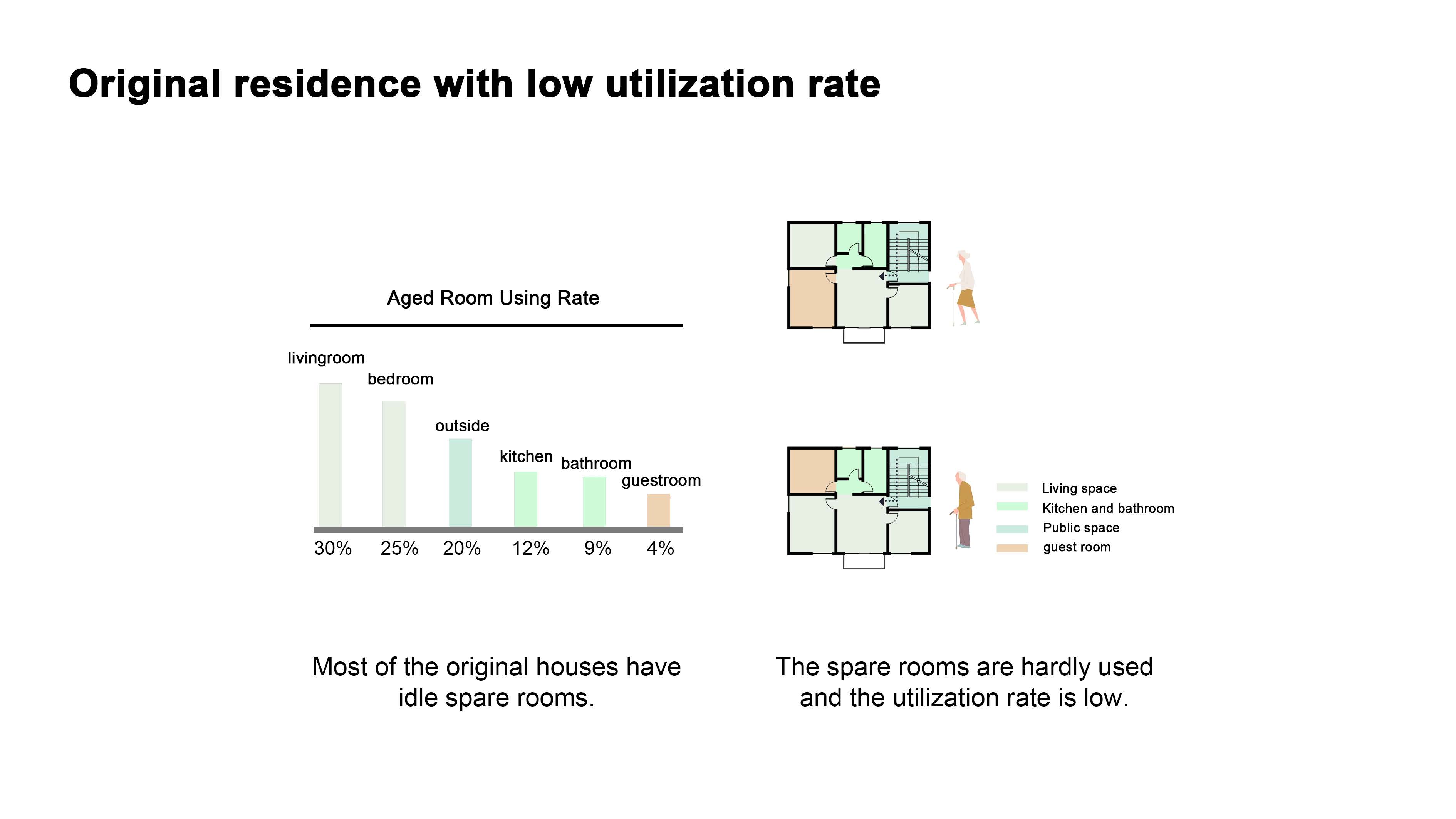
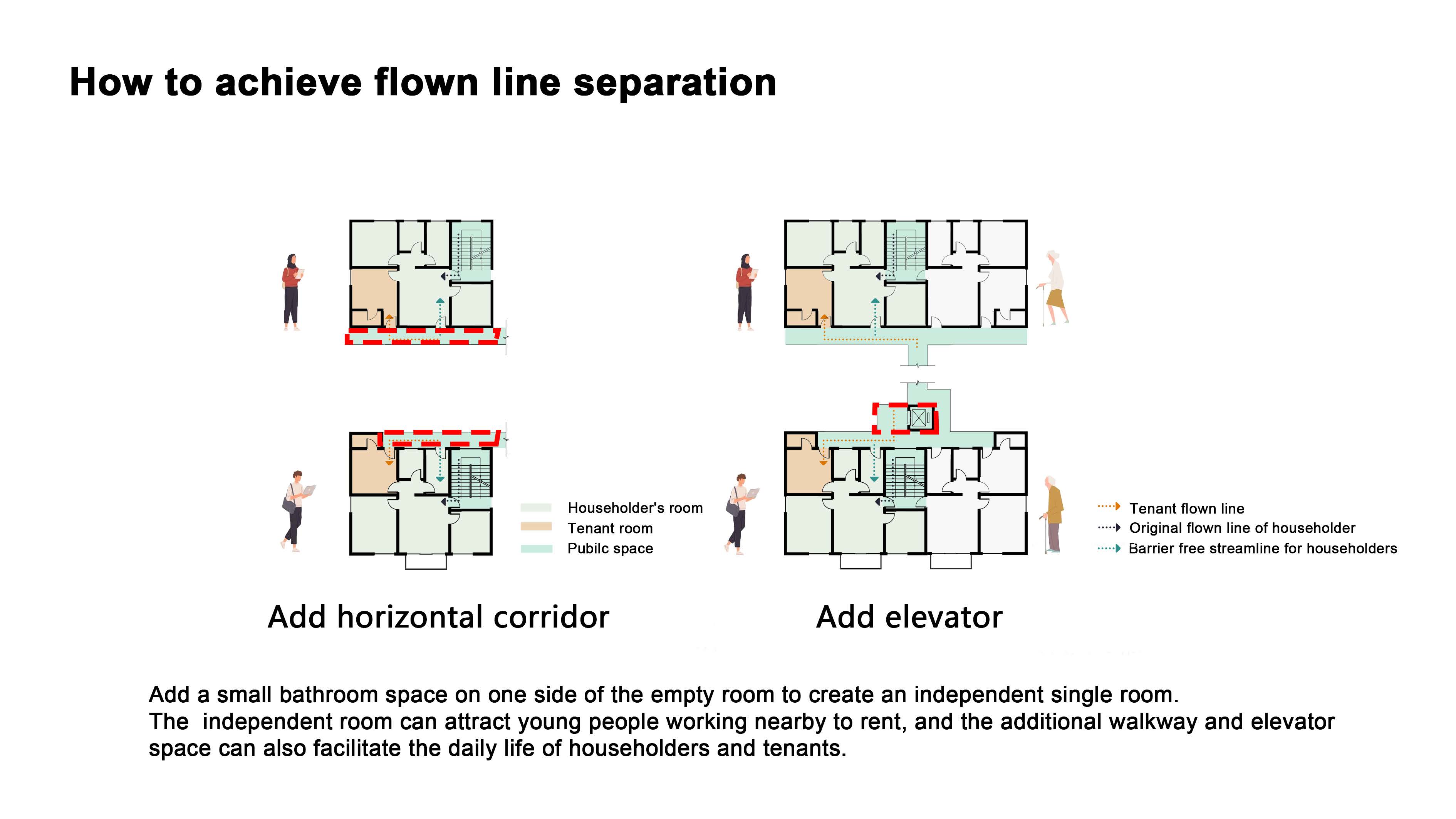
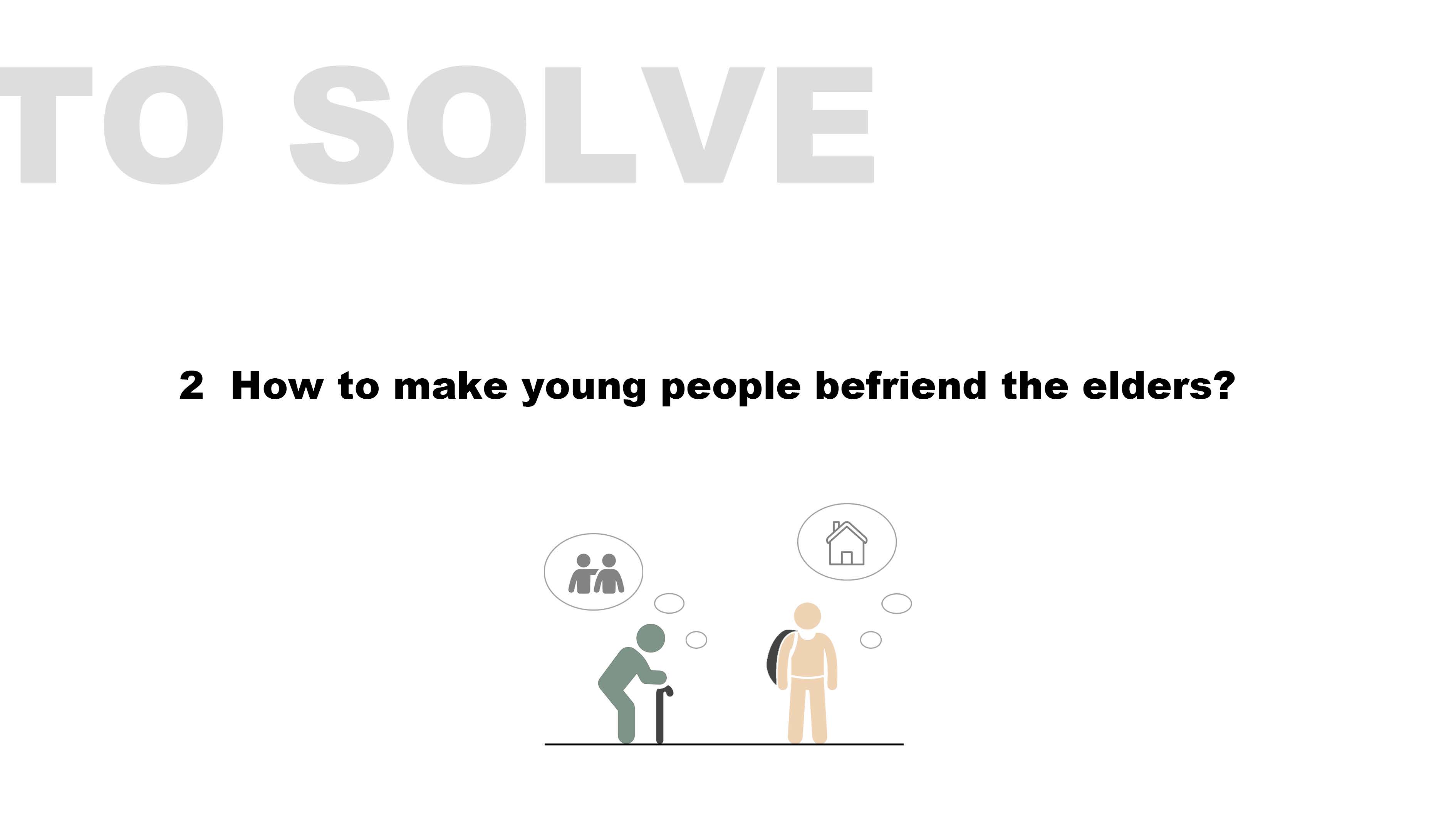
Next, we need to solve another problem, how to make young people befriend the elderly? We introduce an APP in the aged-mixed community. , they can input their personal characteristics and then the householder and tenant match each other, and they can even discuss some community events on the app. These functions make it easier for householders and tenants to communicate and live in the premise of maintaining social distance.
In order to make the elderly and young people get enough public space, we built many modules in the atrium space between the two central houses, and designed the courtyard. The two buildings on the side are mainly for the elderly, and the two buildings in the middle are for the young and some of the elderly, in order to minimize the interference of the young to the elderly.
This is the scene of harmonious communication between the elderly and young people in the community . The elderly can drink tea and play chess with the young people in the atrium activity space, and the young people can teach the elderly to use electronic products such as mobile phones. They can also chat and walk together on the corridor and platform.
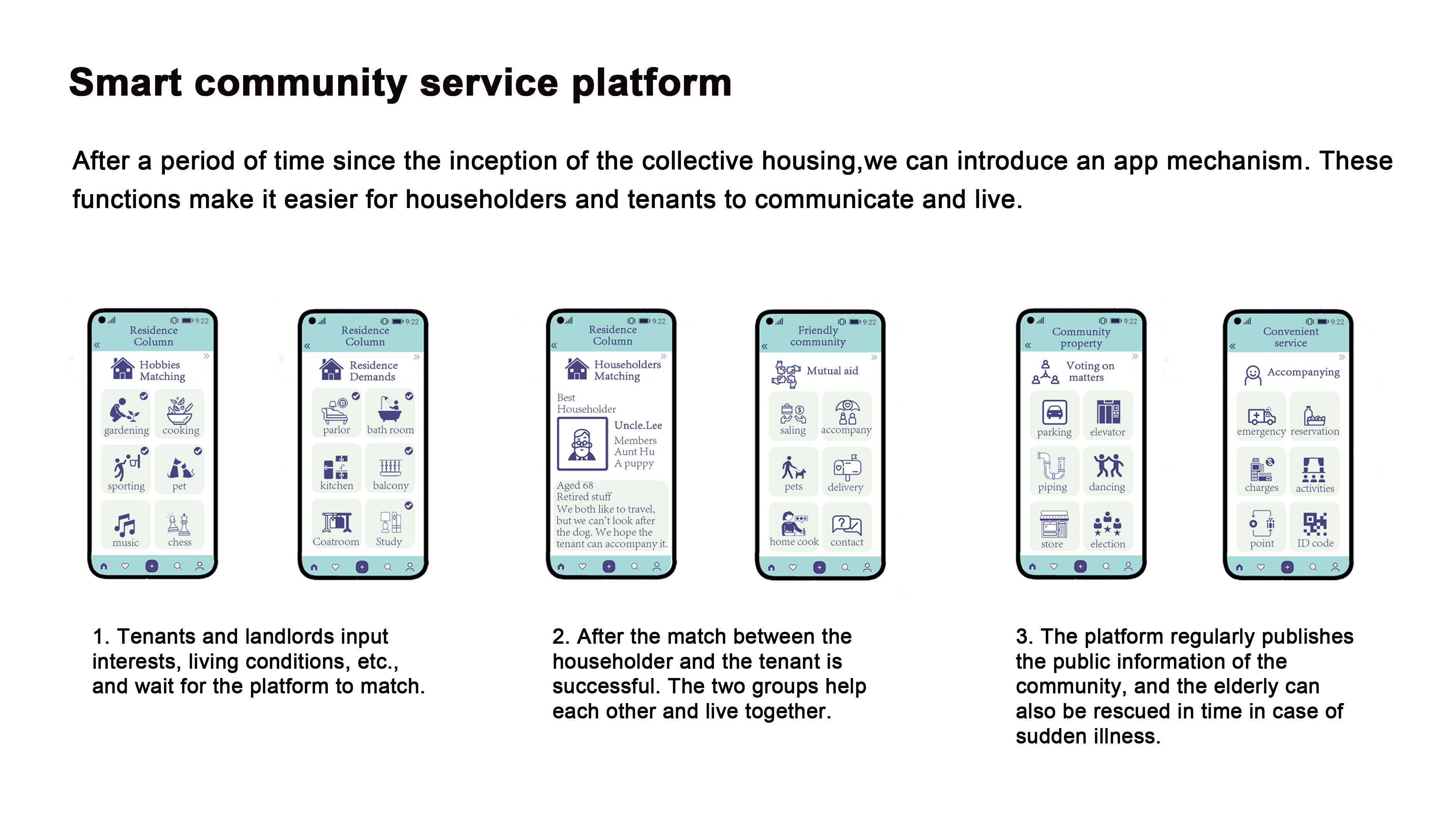
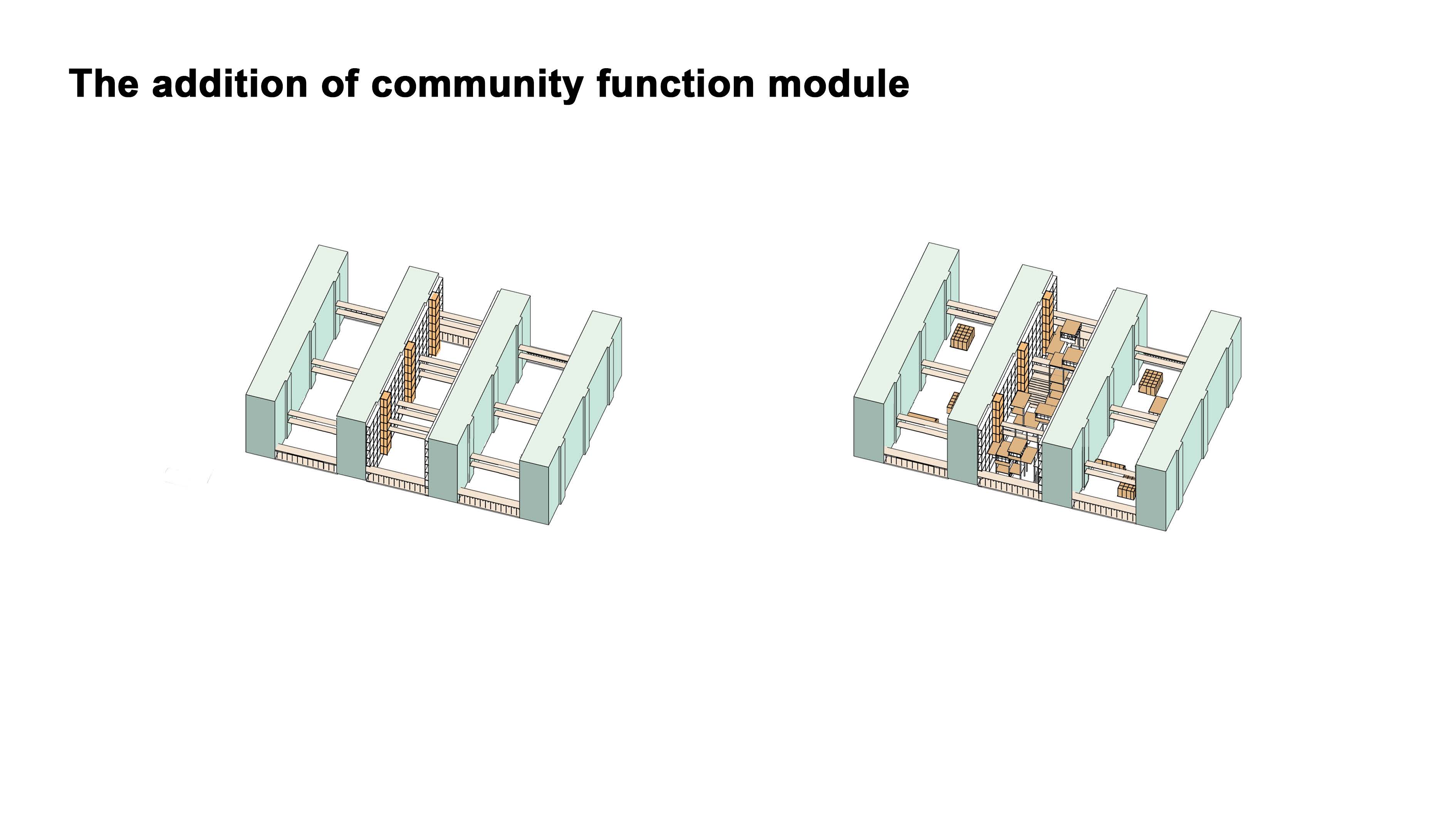
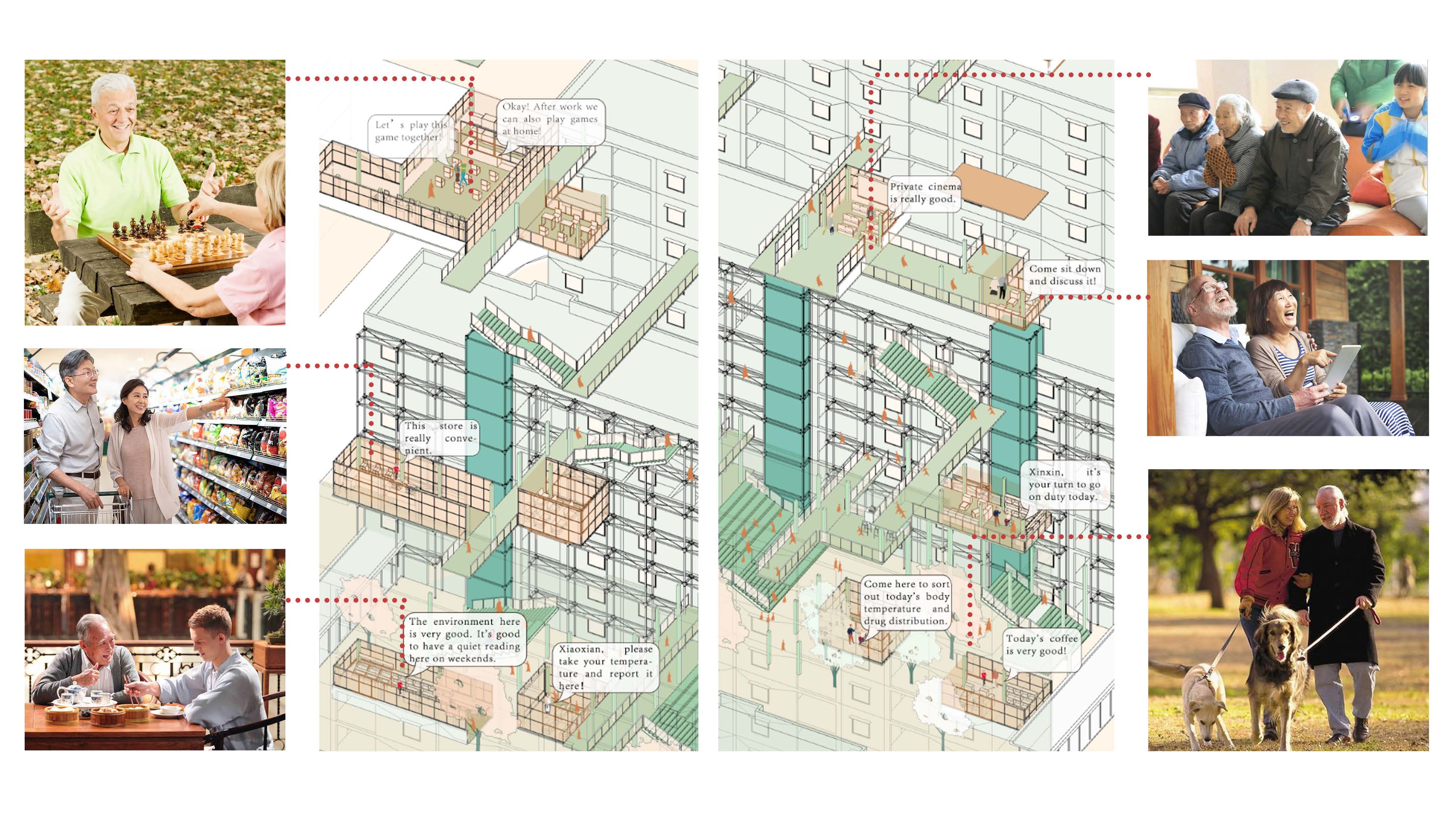
Finally, in some extreme cases, we can change the function of atrium public activity space according to the three stages of the epidemic. For example, the public activity space during daily period can be transformed into an isolation ward when the epidemic comes, and into a nurse station at the later stage of the epidemic.
During the epidemic period, the entire community can quickly enter the pause mode.In daily life, free and dynamic community space can meet the needs of residents for a better life. During the outbreak, functional modules gradually become isolated and enclosed from the bottom up, ensuring the safety of residents.
In this design, we explore a new path of old community renewal: Enhancing the resilience of community organizations under the epidemic situation through adjusting the age structure of the population. In the daily mode, the age-mixed community helps to enhance the vitality and quality of life of the elderly community; when the epidemic comes, young people can help the elderly to make use of the new public facilities to acquire a more long-term and reliable life.
